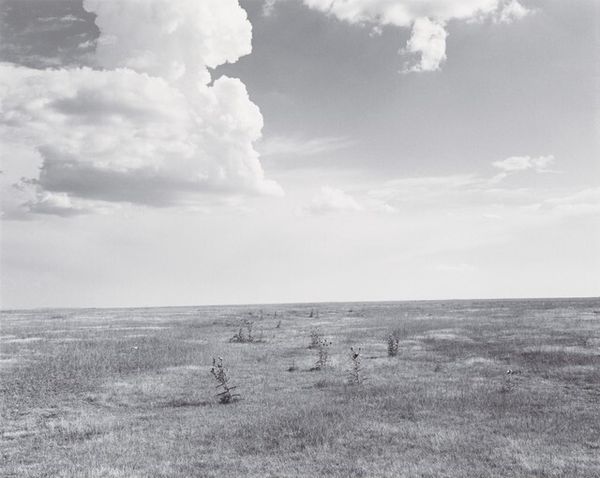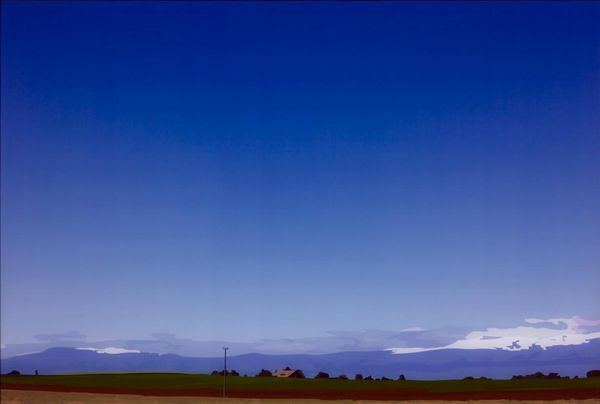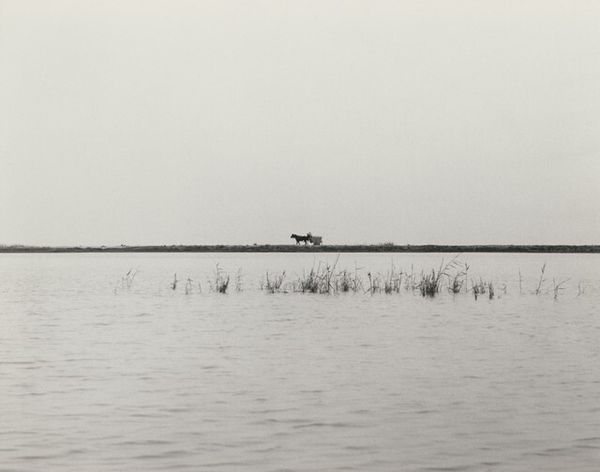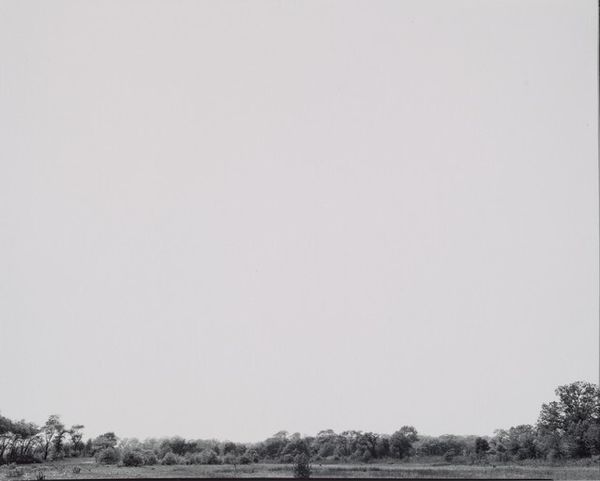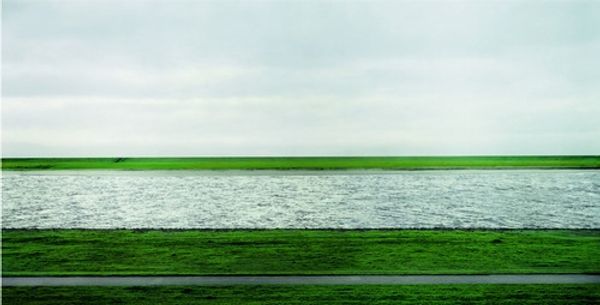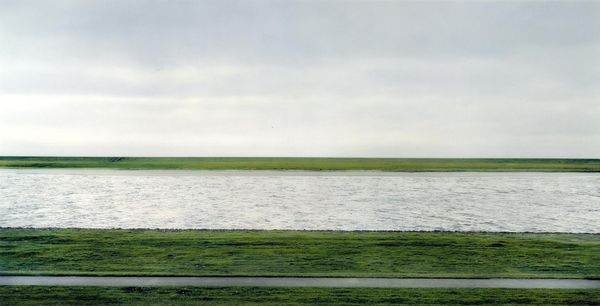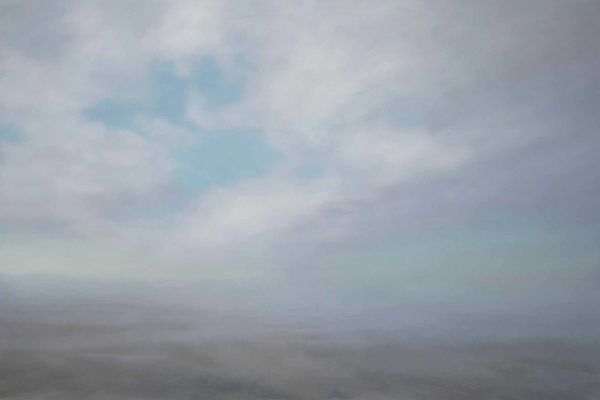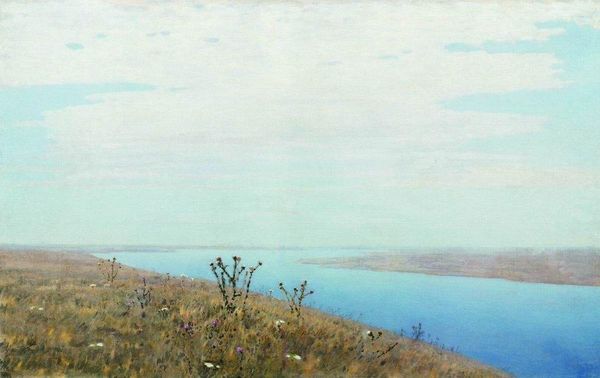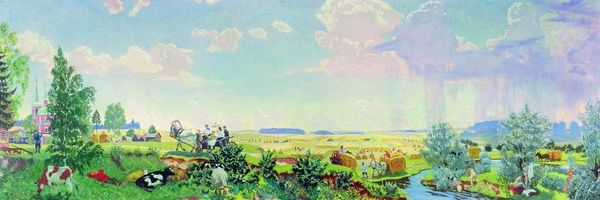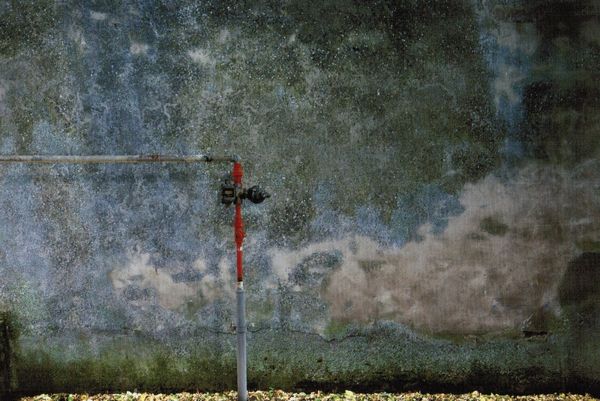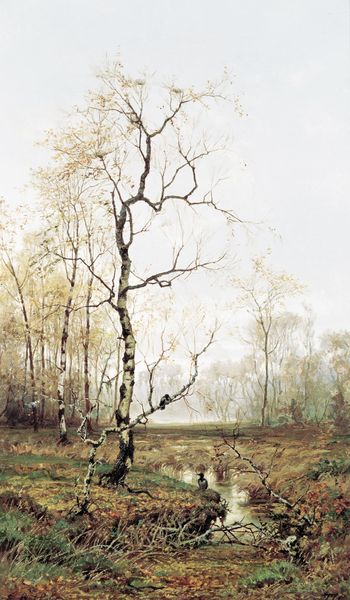
Copyright: Public domain
Editor: So, here we have Arkhyp Kuindzhi's "Steppe. Cornfield" from 1875, an oil painting capturing a vast landscape. I find it intensely peaceful, almost to the point of feeling a bit melancholic. What do you see in this piece? Curator: That melancholic peace, as you so aptly put it, resonates deeply with me. It's a vast, golden ocean of wheat meeting an endless sky. But notice how Kuindzhi isn't just painting a pretty landscape. It’s a meditation, isn't it? The lone figure feels insignificant, almost swallowed by the immensity of nature. Do you get that sense of, dare I say, spiritual dwarfing? Editor: Absolutely. The vastness definitely overpowers the human figure. It’s humbling, I suppose. Was Kuindzhi known for this… this feeling of smallness against nature’s backdrop? Curator: Precisely! He was a master of light and atmosphere, yes, but also of invoking emotional responses. Kuindzhi uses light almost as a spiritual force. Look at how it illuminates the field, almost radiating a divine glow. The figure is there, a tiny participant in this grand cosmic display. Think of it like a stage where nature plays the lead role and the human is just an extra. Editor: That's beautifully put. So it’s not just a landscape, it’s more of a philosophical statement about humanity’s place in the universe? Curator: Precisely! And aren't the best artworks the ones that sneakily slip big, universe-sized thoughts into your mind while you're simply admiring a field of wheat? He makes you wonder, doesn’t he, about our purpose, our fleeting existence under this immense sky? Editor: I see it now. It is quite humbling. I initially thought it was simply a nice landscape painting, but now it's a quiet invitation to existential contemplation! Curator: Exactly! And that, my friend, is the sneaky magic of art. Isn't it wonderful how a simple image can open up entire universes of thought?
Comments
No comments
Be the first to comment and join the conversation on the ultimate creative platform.
